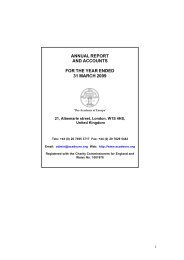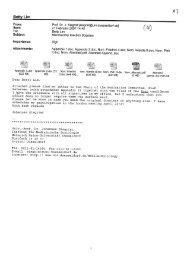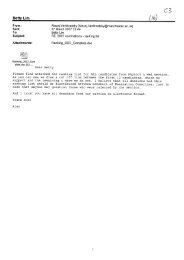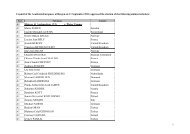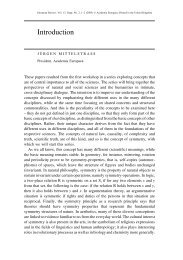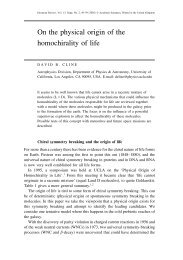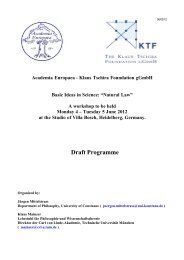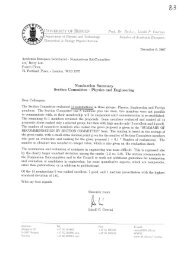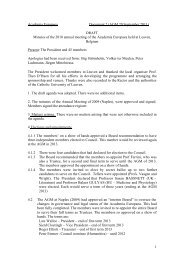Development of the asymmetric human - Academia Europaea
Development of the asymmetric human - Academia Europaea
Development of the asymmetric human - Academia Europaea
You also want an ePaper? Increase the reach of your titles
YUMPU automatically turns print PDFs into web optimized ePapers that Google loves.
102 Lewis WolpertFigure 5. A simplified view <strong>of</strong> some <strong>of</strong> <strong>the</strong> genes involved in L/Rasymmetry in <strong>the</strong> chick. Inhibition <strong>of</strong> sonic hedgehog on <strong>the</strong> right side leadsto nodal expression on <strong>the</strong> left side. 1in turn lead to organ asymmetry. But <strong>the</strong> details <strong>of</strong> <strong>the</strong> mechanism by which, forexample, <strong>the</strong> heart moves to <strong>the</strong> left remains unclear.But what causes <strong>the</strong> increase in calcium on <strong>the</strong> left side? In <strong>the</strong> chick embryo<strong>the</strong> proposed mechanism is based on left/right differences in H /K -ATPaseactivity. H /K -ATPase activity across Hensen’s node creates a gradient inmembrane potentials, which in turn is likely to cause a differential ion flux across<strong>the</strong> L/R axis, so that calcium accumulates on <strong>the</strong> left side. 6 In <strong>the</strong> mouse, a ra<strong>the</strong>rdifferent mechanism for accumulation <strong>of</strong> calcium on <strong>the</strong> left side has beenproposed. 7 In <strong>the</strong> mouse node, and so presumably also in <strong>human</strong>s, <strong>the</strong>re are twopopulations <strong>of</strong> cilia. One motile type <strong>of</strong> cilia moves fluid from <strong>the</strong> right side to<strong>the</strong> left side and this bends <strong>the</strong> non-motile sensory cilia on <strong>the</strong> left side, this inturn results in <strong>the</strong> release <strong>of</strong> calcium and nodal activation. Artificial reversal <strong>of</strong>flow reverses left–right asymmetry.The <strong>human</strong> brain has many <strong>asymmetric</strong>al features and how <strong>the</strong>se are specifiedis poorly understood, even if <strong>the</strong> mechanism that is involved in <strong>the</strong> development<strong>of</strong> body L/R asymmetry also controls <strong>the</strong> development <strong>of</strong> asymmetry in <strong>the</strong>brain. A nice genetic model for left- and right-handedness has been put forwardby McManus. 8 He assumes that <strong>the</strong>re are just two genes controlling handedness,a dextral gene, D, and a chance gene C. People with two copies <strong>of</strong> <strong>the</strong> Dgene, who are thus DD, will always be right handed; those who are CC will beleft or right 50% <strong>of</strong> <strong>the</strong> time, and CD individuals have a 25% chance <strong>of</strong> beingleft-handed.



